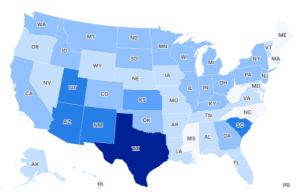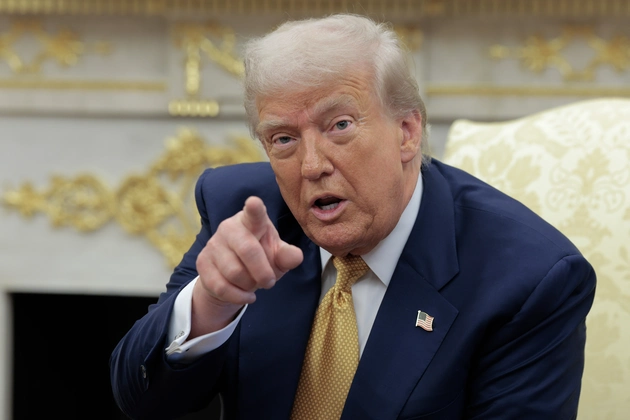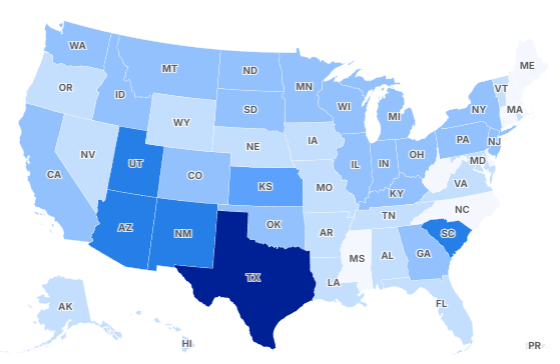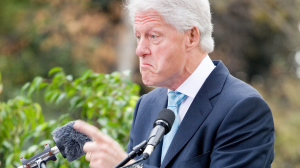Cracks Widen as Voter Sentiment Shifts Ahead of 2026 Midterms
The American political landscape is shifting rapidly, and data analysts are beginning to raise serious red flags—especially for one party. With just over a year to go before the 2026 midterm elections, voter trends are telling a story that many insiders had hoped wouldn’t be true.
For months, strategists and consultants have speculated about what kind of political momentum would carry into 2026. Would it be a backlash cycle or a consolidation year? Would inflation or culture wars dominate the narrative? And more importantly—would it favor Democrats or Republicans?
Until recently, these questions were up for debate. But new polling, combined with stark commentary from a major network’s top data analyst, may be turning speculation into warning signs.
Data Doesn’t Lie—But It Can Surprise
Recent polling conducted by the Wall Street Journal reveals a dramatic shift in public opinion. While polling is often a snapshot in time, the current trends have persisted longer than many expected.
The Journal poll shows that just 33% of voters now hold a favorable view of the Democratic Party. That number may sound low on its own—but it’s even more concerning when compared to historical data. This marks the lowest favorability rating the party has recorded since at least 1990.
More striking is the gap between favorable and unfavorable impressions. A 63% unfavorable rating places Democrats in an increasingly vulnerable position as they try to reclaim political ground lost in 2022.
By contrast, the Republican Party has maintained a smaller unfavorable margin of just 11 points—showing that while neither party enjoys overwhelming support, the GOP is currently viewed with significantly less skepticism.
The Momentum Shift Is Measurable
Even as Democrats attempt to campaign on social programs and healthcare access, voters appear to be more focused on practical, everyday issues. The same Journal poll shows Republicans gaining trust over Democrats in areas such as the economy, trade, inflation, and foreign policy.
In these areas, Democrats are not just underperforming—they’re failing to convince voters that they offer viable solutions. It’s a problem of both policy and perception.
Meanwhile, former President Donald Trump—now once again in office—has regained public favor among key demographics. The data shows Trump with a smaller gap between favorable and unfavorable views than the Democratic Party itself. That metric alone signals a major shift from just a few years ago.
Internal Fractures Are Taking a Toll
While numbers reflect external perceptions, internal challenges aren’t helping either. The Democratic Party continues to battle internal fractures between moderates and progressives, making it harder to present a unified front.
This lack of cohesion is translating into ineffective messaging and inconsistent branding. Without a clear leader or rallying figure, the party has struggled to offer a compelling alternative to the Republican agenda.
That vacuum isn’t going unnoticed by voters. Confidence, once seen in younger, progressive figures, now appears diminished. And the electorate is responding with skepticism.
A Sobering Warning from an Unlikely Source
Perhaps the most eye-opening moment came from CNN’s senior data reporter, Harry Enten. Known for breaking down polling data with precision and balance, Enten didn’t mince words.
Speaking candidly about the current numbers, Enten stated that Democrats are “breaking records in a way you don’t want to break records.”
It wasn’t a partisan comment—it was a statistical red flag. When analysts begin using that kind of language, it typically signals a deeper issue than just one bad poll.
Enten’s analysis added credibility to concerns already whispered in political circles: that Democrats aren’t just trailing, they’re collapsing in key metrics once considered safe.
The Trump Factor
Adding fuel to the fire is the return of Donald Trump to the White House. While Democrats hoped that his re-election would galvanize opposition, polling shows the opposite effect. Voters are increasingly aligning with Trump on kitchen-table issues like inflation, wages, and crime.
Even figures who once sharply criticized Trump have changed their tone. Former MSNBC host Chris Matthews, for example, recently acknowledged that Trump “knows the pulse of the country,” despite once calling his rhetoric extreme.
This shift in tone among media veterans signals that political winds may be changing—and fast.
Strategy or Spiral?
While some within the Democratic Party are calling for a strategic overhaul, there’s little consensus on what direction that should take. Should the party move toward the center? Double down on progressive causes? Focus on economy-first policies?
Right now, the strategy appears undefined, and the window for resetting the narrative is shrinking by the day.
Unless the party can rally behind a message that resonates with independents and disillusioned moderates, they may face historic losses—not just in congressional seats, but in long-term influence.
What the Numbers Really Say
At its core, this polling paints a picture of a Democratic Party in decline—not just in popularity, but in trust. While approval ratings rise and fall, long-term trends in trust often define the outcome of elections far more than flash-in-the-pan controversies.
The fact that only 8% of respondents view the Democratic Party “very favorably” should concern any strategist, consultant, or volunteer working on 2026 races.
The time to correct course is limited. And if current trends hold, Republicans are poised to capitalize—perhaps more than they did in 2022.

Emily Johnson is a critically acclaimed essayist and novelist known for her thought-provoking works centered on feminism, women’s rights, and modern relationships. Born and raised in Portland, Oregon, Emily grew up with a deep love of books, often spending her afternoons at her local library. She went on to study literature and gender studies at UCLA, where she became deeply involved in activism and began publishing essays in campus journals. Her debut essay collection, Voices Unbound, struck a chord with readers nationwide for its fearless exploration of gender dynamics, identity, and the challenges faced by women in contemporary society. Emily later transitioned into fiction, writing novels that balance compelling storytelling with social commentary. Her protagonists are often strong, multidimensional women navigating love, ambition, and the struggles of everyday life, making her a favorite among readers who crave authentic, relatable narratives. Critics praise her ability to merge personal intimacy with universal themes. Off the page, Emily is an advocate for women in publishing, leading workshops that encourage young female writers to embrace their voices. She lives in Seattle with her partner and two rescue cats, where she continues to write, teach, and inspire a new generation of storytellers.









